When actress Betty White, best known as one of the original “Golden Girls,” died in December 2021 at the age of 99, her last word was reportedly “Allen.” Allen Ludden was White’s third husband and the great love of her life; the one Bob Saget reported she expected to be united with after death. “It’s so sweet and so loving,” friend and colleague Vicki Lawrence told E! News’ Daily Pop of the deathbed vision reported by White’s assistant. “And, God, I hope it’s true.”
If White saw Ludden – or believed she did – she wasn’t alone: studies have found that some 88 percent of dying individuals report deathbed dreams or visions that can involve loved ones, traveling or preparing to go somewhere, religious figures, or meaningful past experiences. In the 1926 book, “Deathbed Visions,” Sir William Barrett compiled many dozens of cases in which dying people reported visiting with deceased relatives or friends – some of whom they didn’t know had died. While the scientific basis for such encounters is unclear, a recent scan of a dying man’s brain – the first ever recorded – displayed unusual neural activity before and after death that activated the same areas involved in dreaming, recall and meditation.
The prevalence of such experiences raises numerous questions. What are deathbed visions: dreams, hallucinations, spiritual experiences or something else? How do they affect the dying process? Anecdotal accounts, psychological and philosophical approaches, and clinical research all offer a variety of lenses through which to view the phenomenon, illuminating the mystery of our inevitable transition from life to death.
Witnessing Deathbed Visions
Tani Bahti was working as an oncology nurse when a patient with three young children unexpectedly recovered from a coma, saying that the saint of her hometown in Mexico had told her it wasn’t her time to die. “She’s the one that kind of opened the door to me of some of the mysteries,” said Bahti, who saw the woman a couple of years later in an elevator – still alive. “I think there’s a part where your body’s starting to shut down, and maybe the spirit or mind is more open to receiving these messages.”
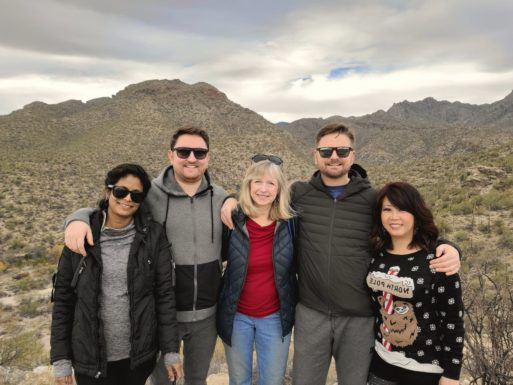
Bahti, center, with family members
Credit: Courtesy of Tani Bahti
Later, Bahti experienced a similar situation with her 90-year-old mother who was preparing for surgery. After an animated discussion with a group of people Bahti couldn’t see, Bahti’s mother turned to her daughter and asked for her permission to go. Before Bahti could answer, her mother relented and promised to stay. (Not only did Bahti’s mother make it through the surgery; she also lived another four years).
Bahti, who has since spent more than 20 years working in hospice, has been at the bedside of numerous patients experiencing deathbed visions. Some of the most common include visitations from those who’ve died before them; religious figures or pets; journeys; and parties or gatherings. Most of these visions are comforting, but some are not – such as the woman who said her deceased abusive husband appeared, apparently to assist her in the death process. The healthcare staff advised her to tell him to go away, and he did.
Another extremely abrasive, elderly woman who was near death and semi-comatose began asking repeatedly where the bus was. Bahti, aware that transport was a common metaphor near death, assured her that the bus would be coming. But after the woman reported that it had arrived and she’d gotten on, she became adamant that she couldn’t stay – that this was the bus to hell. “I said, ‘Well, get off the bus!’” Bahti said. The woman did, and later reported that a white ambulance had come, which she felt comfortable boarding.

Bahti’s patient was welcomed by friends aboard a white ambulance.
“This lady’s body lit up with joy,” Bahti said. “She was grinning ear-to-ear, and I’d never seen her grin. And she said, ‘Look, there’s a party. And they were waiting for me all this time.’” Bahti later found out that it was the woman’s friends at the party, not her family, with whom she’d had a poor relationship. The woman’s daughter, who was sitting at the bedside, had tears streaming down her face, saying ‘‘I know you said this was possible, but until this moment, I didn’t believe it.’”
Barbara Karnes, an end-of-life educator who worked as a hospice nurse when the specialty was just beginning to develop in the 1970s, had many similar experiences. In the days and weeks prior to death, she said, patients typically engage in a life review – contemplating their triumphs, mistakes and choices. Many begin talking to people that others can’t see. “The person has withdrawn from this world and they’re living in another world,” she said. “And that other world is like the dream world. They can hear you, but it’s as if from afar.”
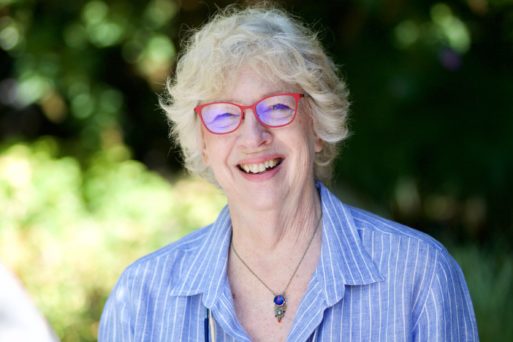
End-of-Life educator Karnes wrote some of the standard booklets on hospice care.
Credit: Courtesy of Barbara Karnes
Karnes recalled her own mother, who had conversations with her recently deceased stepfather, as well as with an angel who went from peeking through the window to approaching the bedside. In another instance, Karnes said, a young boy born with AIDS began collecting money in the weeks prior to his death for a trip to see his parents – both of whom had died. Hours before his death, the four-year-old started grinning, pointing to the upper corner of the bedroom, and calling his mother by name. “He stayed focused on that corner until he died,” Karnes said. “You can’t convince me that mom wasn’t there to help him get from this world to the next.”
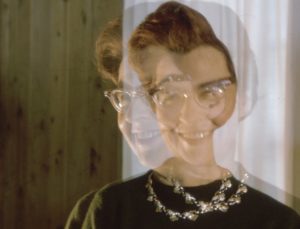
One dying boy called to his dead mother.
Bahti said that even when they’re not the ones dying, children and animals often appear to view the same visions that the dying person is experiencing. When a pet dog is intent on an apparently empty chair, Bahti will sometimes ask a patient if there’s something there; it’s not unusual for a patient to respond by matter-of-factly identifying a dead person. And when a family reluctantly allowed a three-year-old to visit her dying grandmother, the little girl, who didn’t know what was happening, looked above her grandmother’s head and started giggling. When asked why she was laughing, Bahti said, she replied: “Look at all the angels.”
A Controversial Phenomenon
Not surprisingly, talk of angels and visits from the dead at the end of life has ruffled a few academic feathers. Terence Hines, a psychology professor at Pace University in New York and the author of “Pseudoscience and the Paranormal” said that a personality trait called “fantasy proneness” may be responsible for so many people’s acceptance of these visions as reality. “I think it’s a lack of oxygen to the brain,” said Hines, who is also a neuroscientist, of the visions. “I think they’re very real in the sense that they’re profoundly emotional and can really produce profound, emotional changes in people. That just doesn’t mean that they’re real in the sense that they represent objective reality and that the person will go over to some afterlife. If this was the case, we’d expect everybody to have pretty much the same thing.” Hines pointed out that people who have deathbed visions of religious figures typically see those that align with their faith tradition, while the commonality of phenomena like loved ones, pets and garden scenes could be explained by people’s need to focus on something peaceful during a frightening process.
Keith Augustine, a philosopher who serves as editor-in-chief of Internet Infidels and co-editor of “The Myth of an Afterlife: The Case against Life After Death,” said he believes that deathbed visions occur “due to a confluence of the presence of the right physiological conditions and the knowledge that one is imminently dying, causing a person to think about questions concerning life after physical death more than they would otherwise.” Augustine pointed to estimates from medical sociologist Allan Kellehear that only about 30% of the dying experience deathbed visions. He added that it’s not surprising that witnesses would be drawn into their orbit, as they are “no more immune from the effects of expectation than anyone else.”
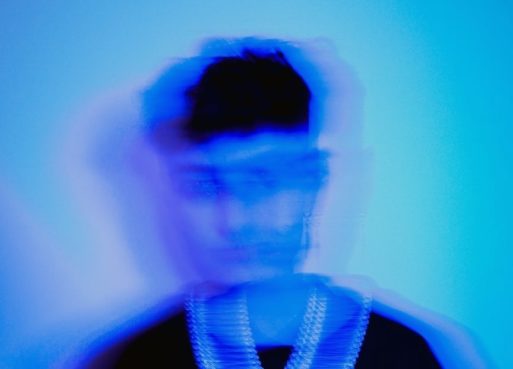
Philosopher Augustine suggests deathbed visions are not as mysterious as they seem.
“If you know that you are surrounded by dying patients, and you’ve developed a personal connection with many of them, you likely have hopes that their experiences won’t simply permanently stop almost as much as they do,” Augustine said. “So anything the slightest bit unusual you might be primed to interpret as evidence that death does not end all (for them, or yourself, for that matter), just as you might interpret a creaking house or the activity of mice as paranormal in nature if you were told before going into it that it has a reputation for being haunted (whether it was really reputedly haunted or not).”
Some are working to rectify the lack of credible research into deathbed visions. Frustrated by the absence of clinical evidence when trying to teach medical residents about the therapeutic nature of these visions, Dr. Christopher Kerr created a rubric to study the phenomena, involving university International Review Boards, using confusional scales to rule out delirium, checking labs and medications, and filming patients. “What we found wasn’t novel or new, we just put some rigor into studying it,” he said. “We put it in the kind of language that we felt other people could at least have some regard for.” Over the years, Kerr has authored eight publications on a total of 1,500 unique dying patients and families, and was featured in the documentary, “Death is But a Dream,” which aired on PBS. “We weren’t telling anything new to people who worked with dying patients, particularly nurses,” he said. “But the response of the lay community has been international and overwhelming – ongoing. And it’s clearly because there was a need to humanize dying as more than a medical failure.”
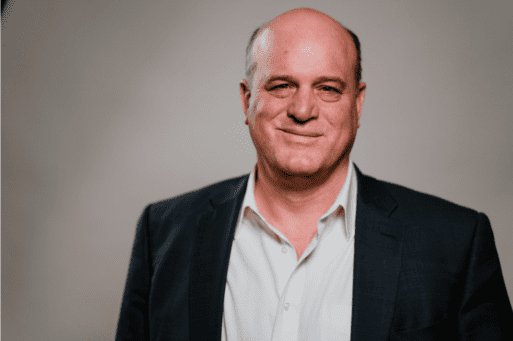
Dr. Kerr is one of the only clinicians to rigorously study deathbed visions.
Credit: Courtesy of Dr. Kerr
Kerr said that he believes these dreams or visions are explained by people’s tendency to refocus at the end of life. “You’re not going to think about your car payment,” he said. “You’re going to think about that parent that loved you.” His research found that as patients near death, their dreams or visions not only became more prevalent, but they also focus less around daily concerns or people who are living, and more around those who are dead. Some of the most striking situations, Kerr said, involve the healing of a trauma – such as mothers whose dead babies return, or soldiers traumatized by war who are released from their survivors’ guilt. “The most meaningful ones were some of the negative ones because they were so transformative,” he said. Most parties agree that regardless of the reality of these dreams or visions, they can provide peace, comfort and healing – not only to the dying, but to friends, family members and others present at the bedside.
A Source of Solace
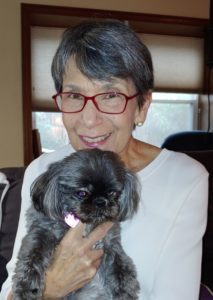
Mendoza with her Shih Tzu, Jezebel
Credit: Courtesy of Marilyn Mendoza
Psychologist Marilyn Mendoza, a clinical instructor of psychiatry at Tulane University Medical Center in New Orleans, became interested in deathbed visions after her mother experienced several. Early one Sunday afternoon, Mendoza was straightening up her mother’s room as she lay in bed, when her mother called her over and said she was ready to go. “I hugged her and I gave her a kiss and then it got really quiet,” Mendoza said. “And then the next thing was, she got really angry. She said, ‘They tell me it’s not my number and I can’t go yet.’ And it’s like, ‘What? You have to have a number to die?’” Another time, her mother reported that she couldn’t leave because her mother (Mendoza’s grandmother), with whom she’d had a tempestuous relationship, was blocking the doorway. Mendoza feels certain these issues were resolved before she died.
“My mother died on a Sunday, on June 4th,” said Mendoza, who was inspired to conduct a survey of nurses from specialties such as hospice and oncology to explore the phenomenon. “Forty years before that my father died on a Sunday, June 4th. So every year now, my brother and I call each other on June 4th, just to be sure that we’re okay. I guess that was the number they were waiting for: June 4.” Personally, the experience has made Mendoza more spiritual.
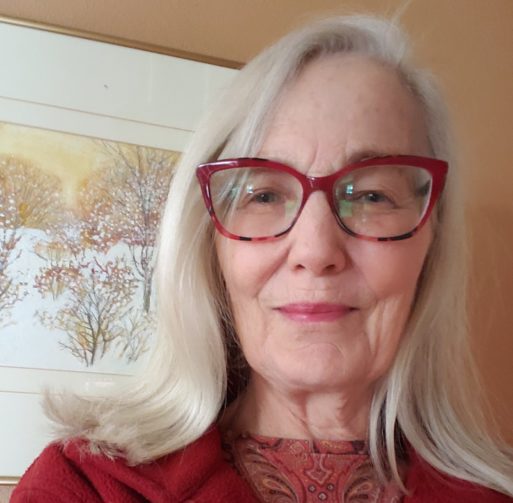
Karen Reppen believes deathbed visions should be recognized and validated.
Credit: Courtesy of Karen Reppen
Karen Reppen, a member of the board of directors for the National End-of-Life Doula Alliance, said that after many years working in the field, she no longer questions whether or not deathbed visions are a chemical process. “Who cares?” she said. “It’s reassuring. It’s usually the people around them that are going, ‘What are you looking at? Who are you talking to?’” Reppen added that she hopes anybody practicing as a doula would reach a similar realization “so that they can reassure people that they aren’t crazy.”
“I’ve known people who have started to see these things way in advance, like little sneak previews,” she said. “To have that validated as well, it has sort of got to be sensitively done.”
While such visions may initially be disconcerting, Bahti, the nurse and end-of-life educator, said that family members who feel responsible for not being present at the moment of death can take comfort knowing that there is often help from the other side. “Nobody dies alone – somebody or something is there with them,” Bahti said, adding that bereaved family members can experience similar comforts: a dream in which the dead person assures the living that they’re all right; or a sensory experience in which a smell or touch appears that they associate with their loved one. At one talk she gave, Bahti found that a roomful of 36 people had all had such post-death experiences.
“If we started sharing these stories more and normalizing them, how would that impact how we approach the end of life?” she asked. “It’s not going to change the pain part of it, of losing someone you love. But it just takes away that extra sting and leaves you with a sense of awe.”

 Deathbed Visions: You Say “Goodbye,” and I Say “Hello”
Deathbed Visions: You Say “Goodbye,” and I Say “Hello”



 “Help Me, Helen”
“Help Me, Helen”

 “As Tears Go By” by Marianne Faithfull
“As Tears Go By” by Marianne Faithfull














